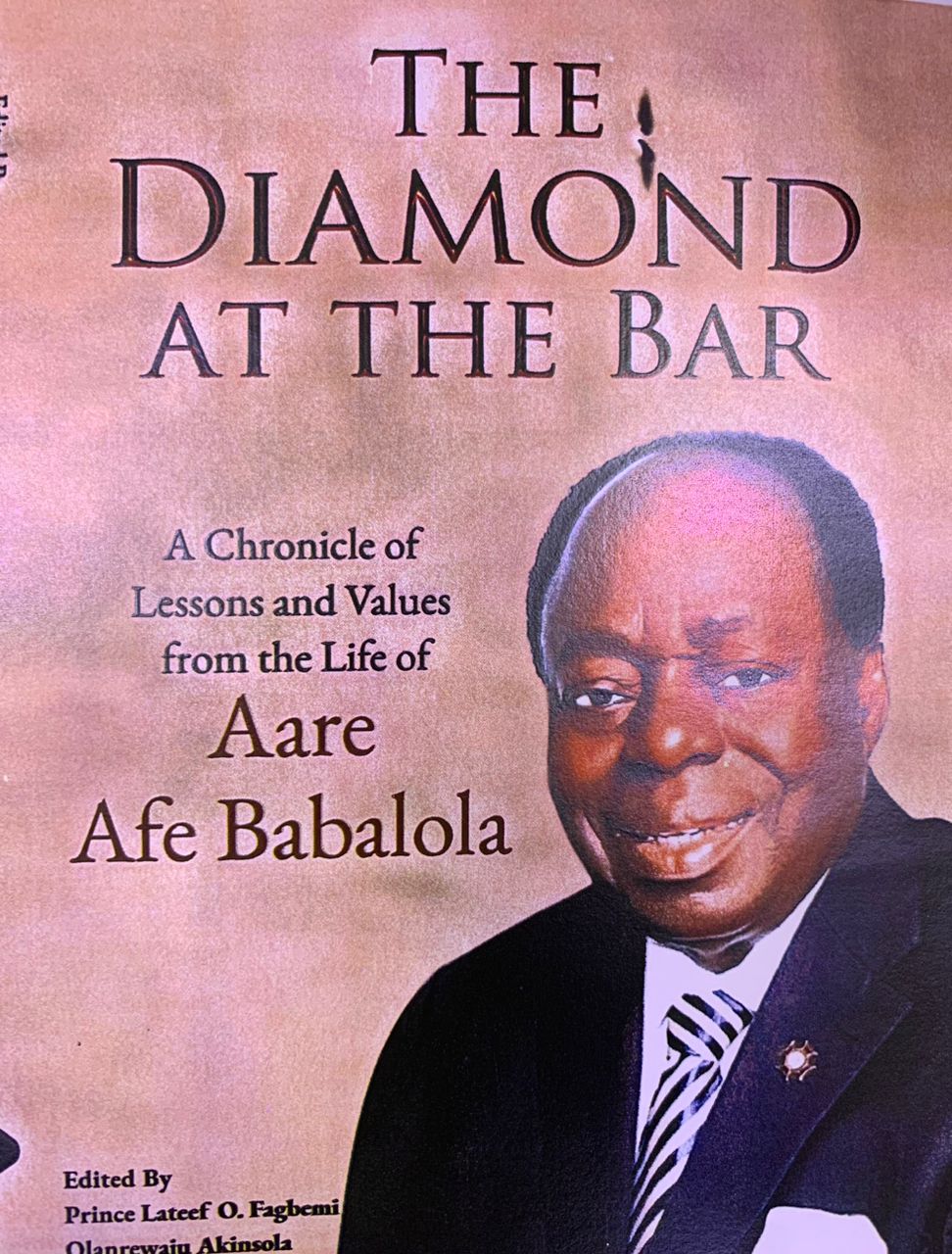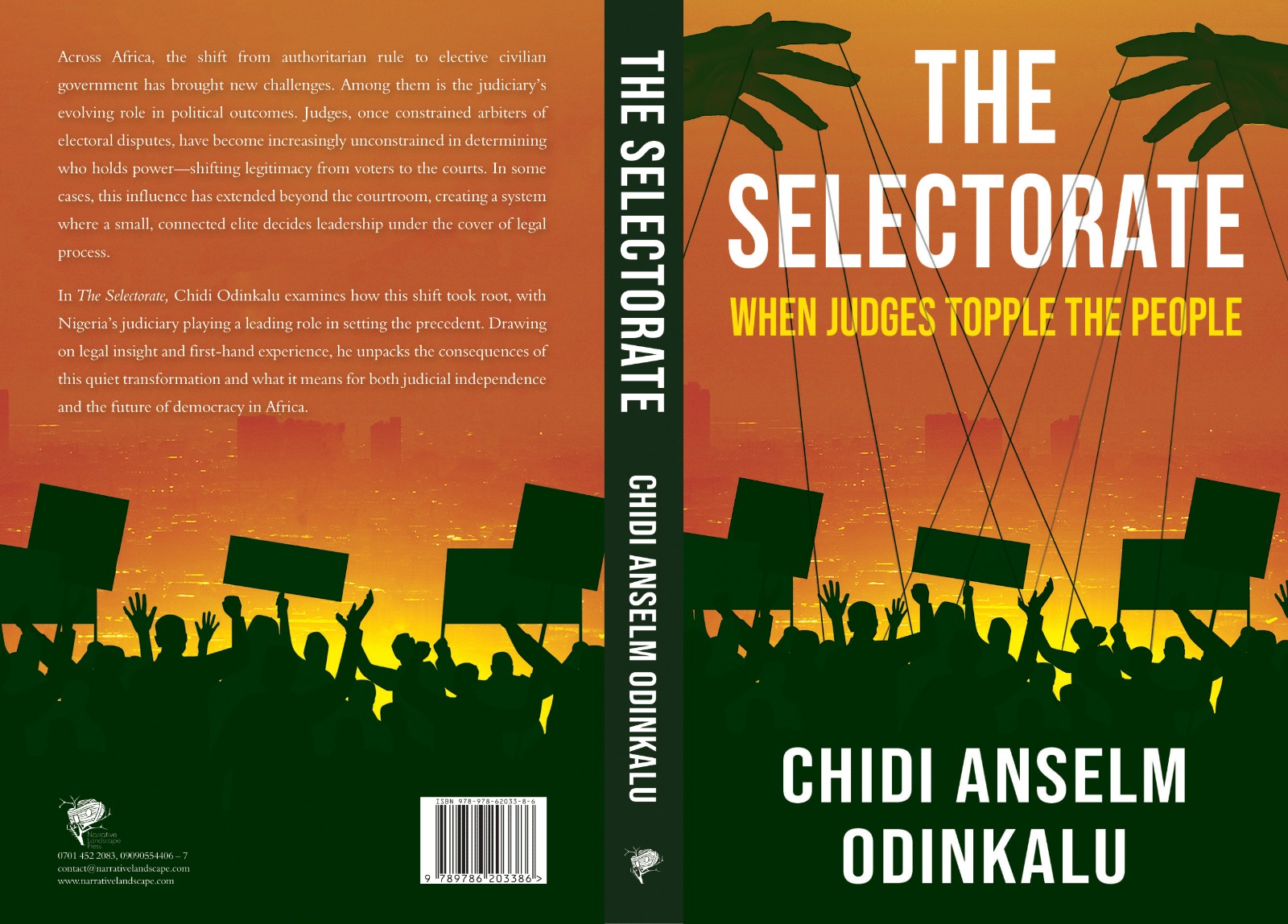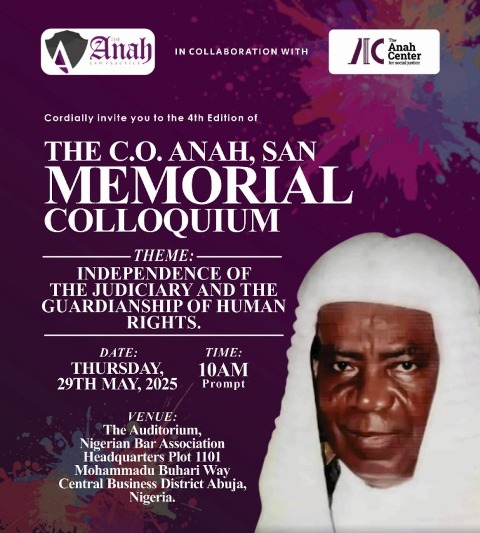Book Reviewer: Dr. Ogwu J. Onoja, SAN, FCArb
1. I am supremely delighted to be saddled with the responsibility of reviewing this seminal book. This is not an assignment I take lightly, for two fundamental reasons. To start with, the subject of the book is a Legend and a Giant in every sense of the two words. Irrespective of the perspective one chooses to look at him, Aare Afe Babalola, the Aare Bamofin of Yorubaland, is a Giant with gigantic accomplishments. With his stupendous achievements, he has succeeded in dwarfing even the most accomplished amongst us.
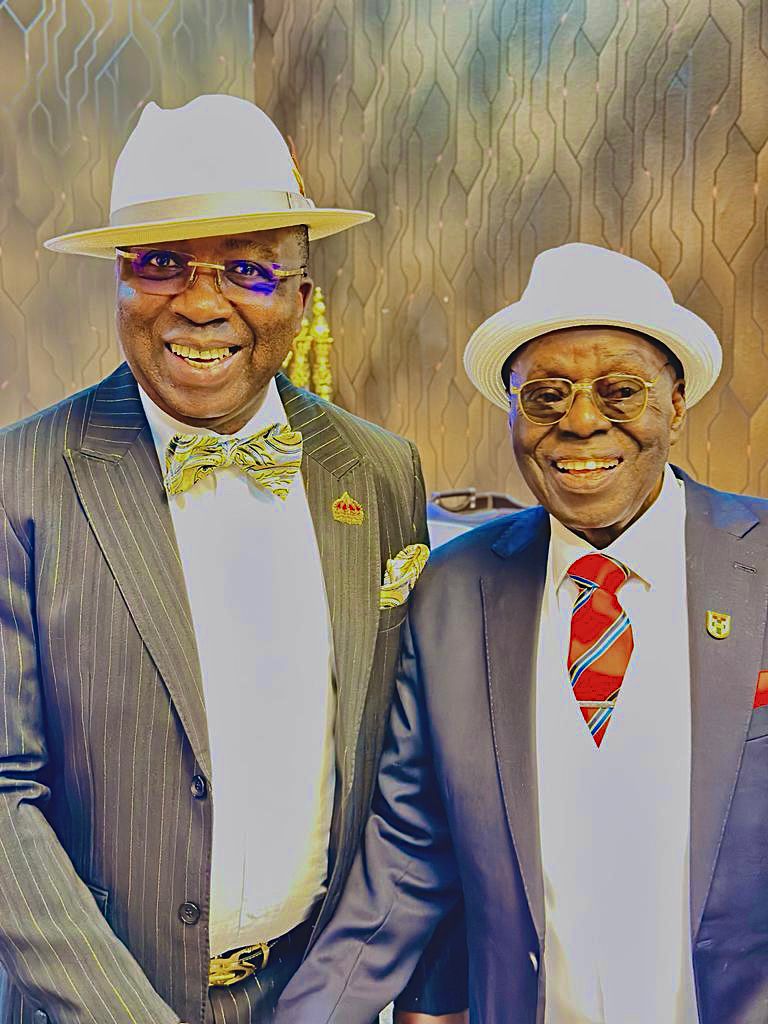
2. The second reason is the sheer number of the eminent contributors who have put pen to paper to produce this masterpiece of a book in honour of the Aare. Looking at the Table of Contents, I was more than awed by the number and the calibre of the writers. It is a roll call of high-achievers who are by themselves giants in their own rights. If I might be permitted to paraphrase the biblical phrase, I believe that this is one book that can be described as “only the deep that can call to the deep.” From Royalty, to the Clergy, to the highest echelon of the Bar, to the peak of powerbrokers, and to the topmost of the Ivory Tower, the list of contributors is intimidating and awe-inspiring.
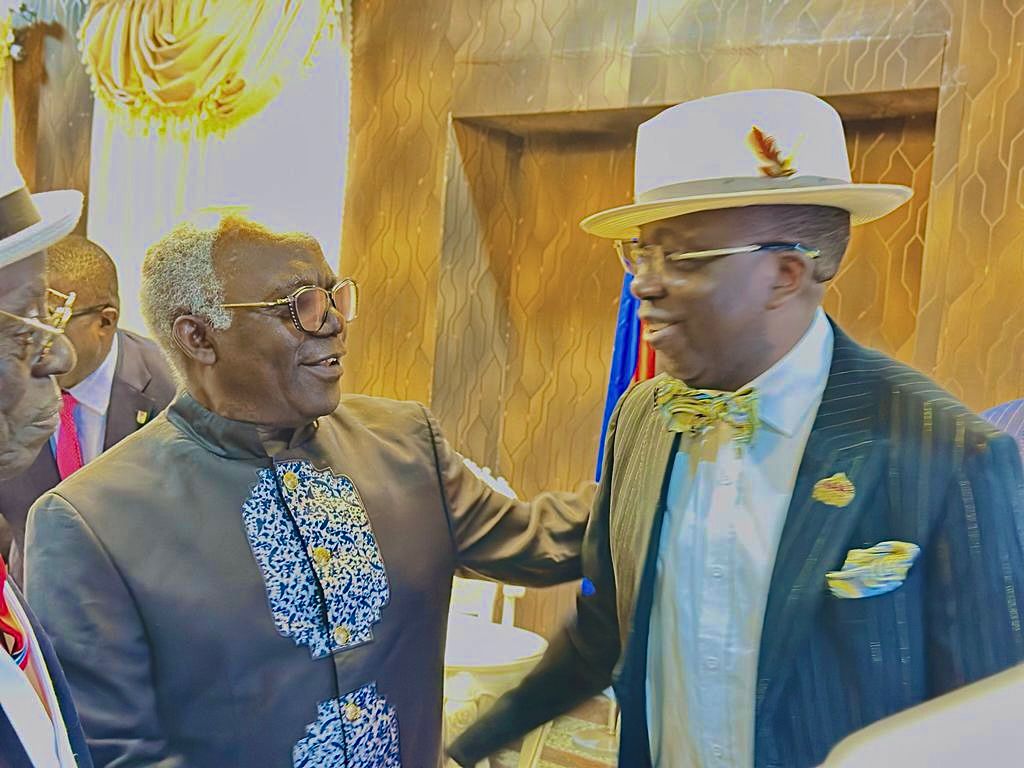
3. It is against the backdrop of the foregoing that I must be permitted to join the legion of the contributors to pay my homage to the Legend of our Time on this Diamond Milestone as a legal practitioner. Although I have not been told by Prince Lateef Fagbemi, Senior Advocate of Nigeria, the reason the book is titled: The Diamond at the Bar: A Chronicle of Lessons and Values from the Life of Aare Afe Babalola, it is my humble opinion that the operative word in the title is DIAMOND.
4. Aare is, without controversy, the Diamond of the Bar. According to the Encyclopaedia Britannica, Diamond is the hardest naturally occurring substance known and the most popular gemstone. The Encyclopaedia goes further to say that: “The hardness, brilliance, and sparkle of diamonds makes them unsurpassed as gems.” Like the Diamond, Aare Afe Babalola as a legal practitioner is known for his hardness in the prosecution of his client’s case. As an advocate, he is celebrated for his brilliance. And as a gentleman, he sparkles with humanity which attracts people to him. For sixty years, Aare has continued to be an illumination and a shining light to the Bar. It is therefore no wonder that the Editors have been inspired to title the book, The Diamond at the Bar.
5. However, that’s not all. Diamond also has a subliminal meaning in the context of our gathering here today. What we are celebrating is in effect the Diamond Jubilee of Aare Afe Babalola’s Call to the Bar of England and Wales. The book is therefore, in my opinion, appropriately titled having regard to the subject and the occasion.
The Book
6. The Diamond at the Bar: A Chronicle of Lessons and Values from the Life of Aare Afe Babalola is a-416 page book with Fifty-Three Chapters. In terms of appearance and aesthetics, I must state that this is a well-produced book. As an author and publisher myself, I must commend the Editors and the Publishers for this feat. The book is easy to read and well-printed. The font used in printing the book is friendly to the eye and one does not need to strain the eyes before reading the wordings.
7. The starting point in my review is a unique feature of this book which, I must admit, does not appear in many books. In my years as an academic, publisher, author, and legal practitioner of the Inner Bar, this is my first time of coming across what I am about to reveal. Whilst it is customary to have Foreword, Preface, and Acknowledgment in books of this nature, this particular book goes further to have a special chapter titled: In the Beginning. And who else could have appropriately written about Aare Afe Bablola’s humble beginning as a legal practitioner than my Noble Lord Honourable Justice Emmanuel Ayoola, CON? We are grateful to His Lordship for the opportunity his piece gives us to have an insight into the fact that Aare’s industry did not start overnight. According to my Noble Lord, Aare would always work by himself from evening till morning! That was Aare as a young lawyer! Is therefore any wonder that Aare became one of the most successful legal practitioners this country has ever produced.
8. My Learned Brother Silk, Professor Mike Ozekhome authored the Foreword to the book. If you know the Akpakpa Vighi Vighi of Edo Land, you already know that he is a prolific wordsmith and someone who is passionate about Aare Afe Babalola. In the Foreword which spans five pages, Prof. Ozekhome presents us with a panoramic view of what the whole book is about. You recall that I had stated above that for sixty years, Aare has continued to be an illumination at the Bar. Prof Ozekhome echoes the same sentiments when he observed that Aare has, by sheer force of personality “taught us that a candle does not lose its light by lighting other candles.” If the list of contributors to the book is an index of the people Aare has impacted, and if the list of those of us who are assembled here is to be a yardstick, the consensus in my view is that Aare’s candle is indeed shining brighter because of the so many other candles he has given light to.
9. His Excellency, Governor Biodun Oyebanji’s detailed and engaging piece is an eye-opener for me. His Excellency like an expert weaver succeeded in weaving a beautiful attire in his narration of his multi-faceted encounters with the Aare. One striking thing I found in the course of reading the Governor’s chapter is the narration of how Aare indirectly contributed to the Governor’s academic success at the University of Ibadan through the instrumentality of my Learned Brother Silk, Gboyega Oyewole SAN. It appears that Aare has a positive way of influencing his proteges to imbibe his virtues of generosity and humanity. A case of like father, like son!
10. All of us are gathered in Ekiti State today. We are thankful for His Excellency for the insight his piece provided about the epic nationalistic struggle for the creation of the State and the role that our Aare and other leaders played to actualize the dream. The title of the Governor’s chapter itself is both a tribute and a testimonial. It is a tribute to Aare’s unparalleled commitment to the cause of Ekiti. It is also a testimonial to Aare’s patriotism and sense of duty. For Aare to consistently be ranked as the highest taxpayer in the State is humbling for me. This is a lesson for me and I believe for all of us that charity must indeed start from home.
11. It was with a bit of trepidation that I turned to Chapter II of the book, and you will soon find out the reason. The Chapter was authored by no other than the Matriarch of the Bar, the first female Senior Advocate of Nigeria. Chief Folake Solanke, was elevated to the Inner Bar exactly ten years before I was called to the Outer Bar! When you are looking for felicity of diction and beautiful use of language, I enjoin you to open the book to Chapter II. In very captivating prose of nine pages, from page 23 to page 32, the Matriarch regaled us with tales upon tales of her professional relationship with the Aare. Interestingly, the two Leaders of the Bar were called to the Bar of England and Wales in the same year; 1963! I must admit that I thoroughly enjoyed reading what happened on Ife-Ibadan Road when the two Leaders were appearing as adversaries in the Ife-Modakeke case. You will need to read the book to find out about the interesting encounter.
12. In Chapter III, our Leader of the Bar, Chief Wole Olanipekun, Commander of the Federal Republic revealed many hitherto unknown facts about his relationship with the Aare, a relationship that has lasted more than four decades. One of the things I found intriguing is the confidence Aare demonstrated in giving a bulky file to an unknown young lawyer to study and review on the first day they met. Did Aare have the gift of clairvoyance? Or how else was he able to discern that the young Wole Olanipekun would also become a star in the profession? I am going to use the metaphor of candle and its light again. Aare’s candle did not dim after giving light to other candles. The other candles also began to give light to other candles with the effect that the whole world is becoming brighter as a result of Aare’s candle. This is my takeaway from Chief Wole Olanipekun’s account of how he was inspired to build the Bar Centre for the Ikere Branch of the Nigerian Bar Association after being inspired by the Bar Centres Aare built in Ibadan and Ado-Ekiti!
13. The unique thing you are going to discover in the piece contributed by His Excellency Babatunde Fashola, SAN, in Chapter IV is that it is one of the few chapters that celebrated Aare’s contribution to the pole position Arbitration has attained in the country today. When we talk of Aare Bamofin of Yorubaland, it is his towering image as a legal practitioner that always looms large. Yet, for decades, Aare has been a foremost arbitrator and a trainer of Arbitrators. The former Governor of Lagos State credited Aare with the inspiration for the passage of the Lagos State Arbitration Law! The candle continues to give light.
14. Distinguished Ladies and Gentlemen, if you want to discover an intimate portrait of Aare at home as a father and in the office as a boss, you should look no further than Prince Lateef Fagbemi, SAN’s contribution which runs from page 47 to page 55. In his characteristic flowing prose which has endeared his briefs of argument to judges of superior Courts, Prince Fagbemi gave us a window into the personality of Aare as a doting father and a disciplined boss. It is only when you have read the book that you will discover the reason Prince Fagbemi referred to Aare Babalola as the Greatest of All Times.
15. Earlier today, we all listened with rapt attention to the beautiful lecture delivered by Bishop Matthew Kukah on The Future of Constitutional Democracy in Nigeria: Imperative of a New Constitutional Order. That was vintage Bishop Kukah! You need however to read the Bishop’s account of How A Tree Made a Forest in this book. As His Lordship did in the just delivered lecture, Bishop Kukah called on all of us to interrogate certain assumptions about life. One of these assumptions is the common saying that a tree does not make a forest. It is the convincing position of the Bishop that Aare has demystified the saying having regard to his stupendous achievements in turning a virgin tropical forest into a bustling university community.
16. Bishop Kukah is not the only clergy who contributed to the book. My Lord, Most Rev Felix Femi Ajakaye’s chapter is the visa we needed to see the spiritual side of the Fiwajoye of Ado-Ekiti. I am in total agreement with the Bishop of the Catholic Diocese of Ekiti that although Aare is not a Catholic, he embodies the virtues of being a Catholic. Aare does not discriminate. Aare embraces all. He welcomes everyone and he accepts all. If any evidence of this is required, a quick glance around this hall will convince all of us that Aare is indeed someone who loves God and humanity. Strangely and by what I could call a divine telepathy, this theme of non-discrimination also featured in Mallam Yusuf Ali’s contribution. According to Mallam Ali SAN: “For you to be like Aare, you must learn to be blind to discriminatory traits like sect, religion and ethnicity.” [page 180]
17. The truism of Bishop Ajakaye and Mallam Yusuf Ali’s submission about Aare’s virtue of embracing all is exemplified by the contributions from our royal fathers. The Ooni of Ile-Ife, His Imperial Majesty Oba Adeyeye Enitan Ogunwusi is categorial when Kabiyesi asserts that Aare Afe Babalola is a lesson to the rich and influential ones amongst us. I have no hesitation in agreeing with the Arole Oduduwa. I doubt if there is anyone who would visit this expansive and massive complex and would not be inspired to go back to his community and make it better. It is simply impossible not to be overwhelmed by the grandeur of this stupendous accomplishment – to borrow the expression of Chief Folake Solanke.
18. Our Royal Host for today, the Ewi of Ado-Ekiti, Oba Rufus Adejugbe is categorical that Aare Afe is 50 years ahead of Nigeria in thinking. From what we have all seen and from what we have witnessed, I am convinced that all of us can swear under the Oaths Act that Kabiyesi is hundred percent correct. It is only someone with exceptional vision that could have built the Bar Centres in Ado-Ekiti, Akure and Ibadan. It is a gifted clairvoyant that could have turned this massive forest into a cosmopolitan campus that hosts international university.
19. The same sentiment was echoed by Oba Dr. Adesanya Aladejare, the Alaaye Obalufon Alayemore of Efon Alaaye. On your way to ABUAD, I believe you noticed the campus of the Federal Polytechnic on your right. Do you know the history behind its establishment and the role Aare Afe Babalola played in its actualization? We are grateful to Kabiyesi for revealing the untold story about the federal institution. I will come back to the school presently.
20. It appeared to me that the Royal Fathers must have had a royal meeting before putting pen to paper to write about their contributions. Oba Sir Michael Ademolaju, the Oloye of Oye-Ekiti was on the same page with his brother Obas when Kabiyesi asserted that “Another Afe Babalola may take about two centuries to arrive.” Having studied Aare closely, it is Kabiyesi’s conclusion that “Aare is nothing but an Oracle – a person who can see tomorrow and who plans adequately for the future.” See page 172 of the book.
21. The judiciary is not left out in detailing how Aare Babalola has been a person of value. I am particularly impressed by the account given by His Lordship Justice Ayodeji Daramola of his encounter with Aare when he [Justice Daramola] was a young counsel in the Ministry of Justice. For him, Aare is not the proverbial cock who does not want other young cocks to crow. Not at all, rather Aare deliberately goes out of his way to cultivate and groom youngsters into become stars. This is evident in the contribution of Justice Akintayo Aluko, my Noble Lord of the Federal High Court. I have mentioned above that Aare is a spiritual person. Credence was further lent to this submission with the spectacular account of what happened when some elderly clients of Aare for whom Aare had just secured a major litigation victory came to give him a gift of ‘African Juju’ for fortification. You want to know what happened to the bouquet of Juju they brought? You will have to turn to page 206 of the book for the interesting tale.
22. In his Foreword to the book, Prof Ozekhome observed, and rightly in my view, that: “…one of the best ways to learn about the quality of a legal practitioner is to look at the quality of clientele he attracts.” See page 2 of the book. One of Aare foremost clients who contributed to the book is no other than our father, His Excellency, Chief Olusegun Obasanjo. According to Baba Obasanjo: “…all the cases he handled for me are extremely important cases…This is only natural because it is only when a case is important and complicated that I call upon him.” This underscores Aare’s quality of hardness as a thoroughbred diamond advocate. For anyone in public service, Chief Obasanjo has a word of advice: “One of the indispensable tools one needs in in public office is the services of a very competent legal practitioner. One needs a good lawyer to advise and guide one’s actions in office. I believe I have had the privilege of having two of the best lawyers that Nigeria has ever produced.” I know that you are itching to know the two lawyers. Right? Well, I am going to disappoint you. You need to turn to page 72 to read the engaging account of our former President and former Head of State.
23. I have mentioned above that the contributors to the book are stars in their own right. It is a parade of the best of the best. Or how else do we describe a book that has as contributors like Chief Adegboyega Awomolo, the Vice-Chairman of the Body of Benchers; Mr. Joseph Bodunrin Daodu, former President of the Nigerian Bar Association; and Chief Akin Olujinmi, former Attorney General of the Federation and Minister for Justice, amongst others. One striking element in all the accounts of the contributors is Aare’s innate ability to make friendship and sustain relationship across generations.
24. Distinguished Ladies and Gentlemen, how many people can boast of a friendship that has lasted for close to seven decades? Chief Deji Fasuan and Aare met in 1954 and have remained friends ever since. Yes, that is a fact! Many of us seated here this afternoon were not born at the time. Yet the two elder statemen are still bosom friends. In the 60s, Aare’s paths crossed that of Justice Emmanuel Ayoola and Chief Folake Solanke. The relationship has endured the passage of time. Aare met Chiefs Wole Olanipekun and Adegboyega Awomolo in the 70s. Till today, they have remained together like two peas in a pod. In the early eighties, Aare became mentors to Chief Olujinmi, Mr. JB Daodu, Prince Lateef Fagbemi and others. They are still together till today. In the nineties, Messrs Adebayo Adenipekun, Gboyega Oyewole, Olu Daramola joined the team of the Man with the Midas Touch. They are still together till today. In the millennium, my younger brothers, Kehinde Ogunwumiju, Shina Ogungbade teamed up with the Fiwajoye Ado-Ekiti, and of course, they are still with him till tomorrow.
25. I do not think I have come across any other person who could boast of such vast networks across generations, across decades, and across centuries. I have not. I believe that Aare is a Special Creation of God in all ramifications. I am certain that this must be one of the reasons why Kabiyesi Oloye of Oye Ekiti rightly predicted that it might take another two centuries for another Afe Babalola to come again. Yet, I also believe that his life is an intentional lesson for those of us who can discern beyond the ordinary. Could this be the reason why Mr. Gbenga Oyebode, MFR observed that: “Aare Afe Babalola is a constant inspiration and motivation to do more.” Page 121.
26. One person who rightly assesses Aare’s penchant for grooming people and assisting them to exceed their potentials is Dr. Ann Coxon, Aare’s London-based physician. Again, the relationship between Dr. Coxon and Aare is another veritable testimonial about Aare’s ability to cultivate friendship across continents. In her very passionate analysis of Aare’s personality, Dr. Coxon concluded that: “Aare Afe Babalola is a man who did not draw up the bridge after him.” (Page 62) To me, this is a poignant statement and it tallies with Asiwaju Adegboyega Awomolo’s assessment that Aare “has successfully impacted these values and virtues into the lives of the very many whose paths crossed his either professionally or through family and social interactions.” page 89
27. Of course, it is clear that the Aare is a man of values and virtues who would not draw up the bridge after he himself has successfully crossed the river. Or how else can we explain what motivated Aare to dream of establishing an international university when he was in his 80s? At that age, he had no child of his to send to the university. Did he want to make money? Was it to get fame and recognition? I believe the answer to these questions have been provided by the scion of Afe Babalola, my learned brother Silk, Tunde Babalola when he opines at page 331 that Aare “is very sacrificial. He will rather sacrifice so that humanity can be blessed rather than use his resources for himself or his family. Thus, most of his hard-earned money he invested into building a private university in his old age to benefit mankind instead of using it for himself and his family.”
28. The academia is also another of Aare’s constituency that is well-represented in the book. As he did at the Bar, Aare in his relationship with the academia, demonstrates his ability to cultivate and retain relationship across generations. Whilst Professor Tunde Adeniran and Prof. Israel Owolabi represent the older generation, we have Prof. Yemi Akinseye-George, SAN, Prof. Koyinsola Ajayi, SAN, and Prof. Ibe Kachikwu coming up on their heels. Of course, Aare is not one to leave out the younger eggheads, amongst whom we have Prof. Damilola Olawuyi SAN, Prof. Olaposi Omotuyi, and Professor Akintunde Akinade. In their respective submissions, they all highlighted vital lessons they were privileged to learn from Aare Afe Babalola.
29. The constancy of Aare’s principled life was again brought to the fore by Prof. Tunde Adeniran’s exposition of what happened when Aare appeared as a Counsel before the Justice Ibidapo-Obe Commission of Inquiry into Ife-Modakeke Crisis of 1981 of which Prof Adeniran was a Commissioner. According to Professor Adeniran: “A lawyer in a faded colonial suit stood up to make what I considered to be the most unprofessional statement anchored by very pedestrian reasoning. I became so impatient not just because logic, the essential tool of thought, had taken flight but also because I found his spoken English with the intonation of his dialect rather embarrassing.” Professor Adeniran then wanted to cross-examine the lawyer but Aare stood up to object to the cross-examination of a learned friend by a Commissioner who was not learned in law. If you want to know what happened when Aare stood up, please turn to page 86 of the book.
30. This review will not be complete if I fail to briefly highlight the contributions of four Amazons whose chapter contributions give us fresh insight into the enigmatic personality of the Legend. Mrs. Funke Adekoya, SAN’s piece titled: “The Unknowing Teacher” is instructive in that people learn more from our conduct than by our words. The learned Senior Advocate detailed two of her encounters with the Aare – one in Ibadan, the other on the streets of London – and the lessons she took away from those encounters. Yeye Asiwaju Victoria Awomolo SAN’s contribution is another piece which established Aare’s firm reputation as a clairvoyant. How could Aare have predicted that she was going to become a member of the prestigious Inner Bar whilst still an undergraduate!
31. Mrs. Folashade Alli and Ms Ann Babalola must be given the credit for the beautiful and frank portrait of their father they painted in their separate contributions. Through them, we got rare glimpses of Aare as a doting, caring but firm father who was always there for his children. I was excited to read Mrs. Alli’s account of the day her father paid a surprise visit to her school during their inter-house sport event and how she ran so fast in excitement and won the race. My take away from Ann’s contribution is the lesson in gratitude that Aare inculcated in his children, the practice of saying ‘thank you’ for every favour received.
32. It is not possible, having regard to time constraint, to examine and review in details individual chapter contributions of all the eminent contributors. It suffices for me to submit that every single chapter of the book contains unforgettable lessons that are unique to the Legend. Take the case of the Obasuyi of Benin, Dr. Charles Uwensuyi-Edosomwan SAN, who was initially scared that Aare who was briefed to lead him would snatch the brief from him. To his pleasant surprise, Aare allayed the fear of the former Edo State Commissioner for Justice and also took him under his wing. Or is it the case of Chief Adeniyi Akintola SAN who was so enamoured with Aare’s mentorship and generosity that he named his law library after the Giant of the Bar?
33. Distinguished Ladies and Gentlemen, if I may be allowed to parody the popular definition of democracy in the context of this book, I will say that this book, The Diamond at the Bar: A Chronicle of Lessons and Values from the Life of Aare Afe Babalola, is a book about the Legend, authored by Legends, and written for those who aspire to become Legends. This is not your regular book of Tributes. It is not even a book of Tributes at all. As the title implies, it is a book that documents the human and leadership principles Aare Afe Babalola has lived his life by as recorded by selected illustrious people who have been privileged to interact with him.
34. There is however another side to this very important book. We have been gifted two bonus chapters of extremely engaging stories about Aare Afe Babalola authored by our own Onigegewura Olanrewaju Akinsola, the co-editor of this book. One case that almost everyone who contributed to this book singled out as being a locus classicus is the case of how Aare Afe used his legal wizardry to ensure that Bashorun MKO Abiola was installed as the Aare Ona Kakanfo of Yorubaland. It is the case that Onigegewura turned into the beautiful story you are going to read in Chapter 52 of the book.
35. Earlier on, I told you briefly about the establishment of the Federal Polytechnic Ado-Ekiti which is just across the road from ABUAD. There is however a deeper story behind the establishment. Onigegewura has once again excelled himself in documenting the events that led to the establishment of that institution. The reality is that without the instrumentality, intervention and contributions of Aare Afe Babalola, that sprawling institution to your left as you approach ABUAD would have never existed. It is a story you will enjoy reading over and over.
34. Your Excellencies, is it possible to have a perfect book? I do not think so. Like every human effort, this book does not lay claim to perfection. My first observation is that as a book celebrating Diamond Jubilee, I believe that it would have been fantastically symbolic to have sixty contributors instead of the fifty-one that we have in this volume. My second observation has to do with the arrangements of the chapters. I believe that the editors could have arranged them according to the sectors the contributors belong to. For instances, the royal fathers, the clergy, the Bar, the Academia, friend and family, could have been grouped together. These observations, I must add, are my personal views, and they do not detract from the beauty, the glamour and of course, the essence of the seminal publication.
35. Before I conclude this brief intervention of mine, I must ask a question from Prince Lateef Fagbemi SAN the reason for my exclusion from the roll of eminent people who contributed to this book. With respect, I am of the humble view that having regard to the fact that Aare Afe Babalola is my mentor and leader, I ought to have been invited as a contributor. Well, whilst the Learned Silk is preparing his defence, I must specially and specifically thank the Fiwajoye of Ado-Ekiti for the singular privilege given to me to be the Book Reviewer at this auspicious event. I want to believe that is the divine compensation I got for not being a chapter contributor. I thank God for your life, Sir. I thank God for all the great things HE has done and HE is still doing in your life. Your life is full of grace and favour. I pray that you will continue to live long for us in good health. [Amen]
36. My task is done. However before I leave the podium, permit to me say one more thing. For those who have visited this expansive campus before, and for those who are visiting ABUAD the first time, I want you to take a leisurely roll around this centre of tourist attraction after this programme. I want you to visit the Afe Babalola Muti-System Hospitals. I want you to visit the ABUAD Farms. I want you to visit ABUAD Industrial Park. And I want you to come back to the campus to start reading this book which we are about to unveil.
37. In peroration, Your Excellencies, Distinguished Ladies and Gentlemen, for anyone interested in contemporary history, leadership principles and values, nationalism and patriotism, self-development, legacies and generational success, inspirational and motivational stories, and above all, divine grace, I recommend this book to all.
Dr. Ogwu J. Onoja, SAN, FCArb
LL.B Hons (Unjos), BL, LLM (Unilag), PGDM,
MBA (Unical), MNIM, MCIArb (UK), F.IoD, FCCM
Solicitor and Advocate of the Supreme Court
Notary Public of Nigeria
Bar & Bench House
Ogwu James Onoja Crescent
[By Family Worship Centre]Wuye, Abuja.

